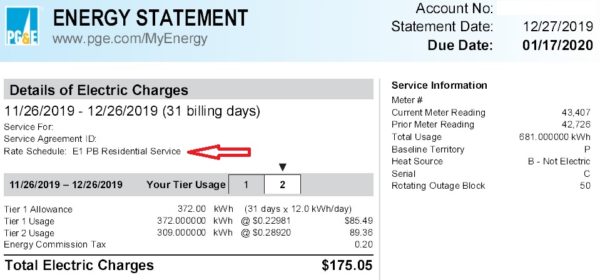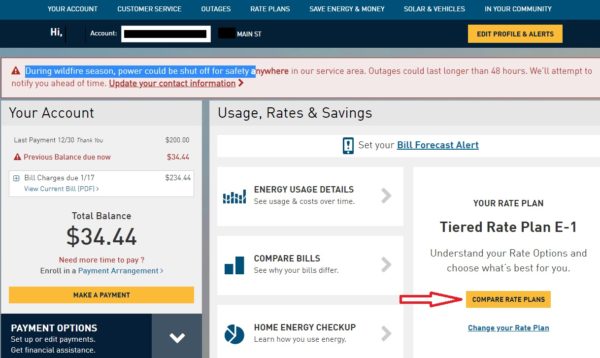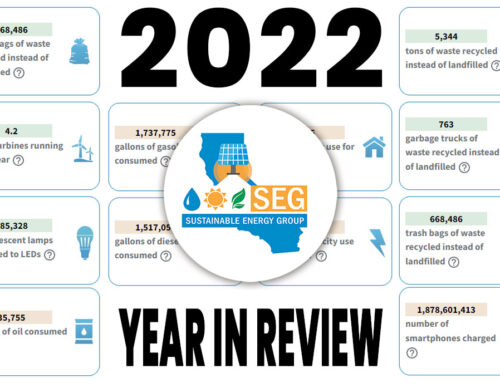Are You Paying PG&E More Than You Should?
Of course you are. We all are. That’s not really what this is about though. It’s about the opportunity to pay less.
Whether you have solar, are planning to go solar, or never plan to go solar, it may be possible to reduce your electricity cost simply by changing your PG&E rate plan. Invest a few minutes of your time to ensure you’re not losing out on possible savings.
Even if you’re not currently on a Time-of-Use plan, know that PG&E will be transitioning all customers to a TOU plan soon.
- All Customers with TOU-A (Time of Use – A) will be transferred to TOU-C in the Summer of 2020. The only way to avoid that is to sign up for TOU-B before May 1st, 2020.
- All customers on the E-1 rate schedule, will be switched to TOU (Time of Use). So, if you’re thinking of getting solar, consider locking in TOU-B rates by May 1st, 2020.
If you are working with us, getting solar or backup power, we can help you understand what is best for you with a site visit or phone call.
This seems complicated, but it will become clearer when you check and review your current PG&E rate plan. Below are instructions on how to navigate your account as well as compare and change rate plans. If you don’t have an online account yet, set one up; the information you’re missing out on could cost you more than you might think! (here is the link to login and on the bottom left, register for a free online PG&E account)
Begin by looking at your “rate schedule” on page 3 of your bill (see red arrow).



Next, explore your options by clicking “compare rate plans” (see red arrow). Once you’re on the comparison page, scroll down to find your rate plan options.



Before you change your plan, there are a few additional considerations. Many plans begin with “E-TOU,” which is an abbreviation for “Electricity-Time Of Use”. With time of use, the price of electricity is based on the time you’re using or generating power (with solar). Each rate plan specifies high-priced “peak” times and lower-priced “off-peak” times.
If you’re an existing solar customer on “E-TOU-A” PG&E is planning to transition you to E-TOU-C on July 1st; or September 30th, depending on what PG&E documents you’re looking at (they’re not always crystal clear about things). When you’re comparing rate plans, E-TOU-C doesn’t currently show up as that, instead it will say “Time-of-Use (Peak Pricing 4-9 pm Every Day)”. In contrast the E-TOU-B is similar but is called out as such and says “Peak Pricing 4-9 Weekdays”. Note the difference between “Every Day” and “Weekdays”. There’s also a difference in the price you pay during winter and summer as well as peak and off-peak periods. It sounds confusing, I know, but fortunately the comparison page will show you the cost difference between “B” and “C”.
If you’re not a solar customer, but are considering going solar, you should consider E-TOU-B before it closes to new customers on May 1st, 2020. Once you’re on it, you’ll be able to keep it for at least five years. In PG&E-speak, you’ll be “grandfathered in”.
This is important because E-TOU-B may be more favorable than E-TOU-C once you’ve gone solar. The only way to really know is to have a solar professional use a cost-benefit analysis tool to see how much power you’ve used during different times of day and month in the past, then evaluate solar for you.
Believe it or not, PG&E knows how much electricity you’ve used every fifteen minutes going back years and years! This information, called “interval data”, can be downloaded from your PG&E account. Beware though, it’s a huge amount of data! Fortunately, we can download that huge data file into our advanced analysis tool and it crunches the numbers for us very simply.
Lastly, even if your home isn’t solar and never will be, we encourage you to compare your options, it’s pretty easy and doesn’t take much time.



![The “Power & Profit” WE Give PG&E [Video]](https://sustainableenergygroup.com/wp-content/uploads/2022/05/utilities-feature-500x383.jpg)

